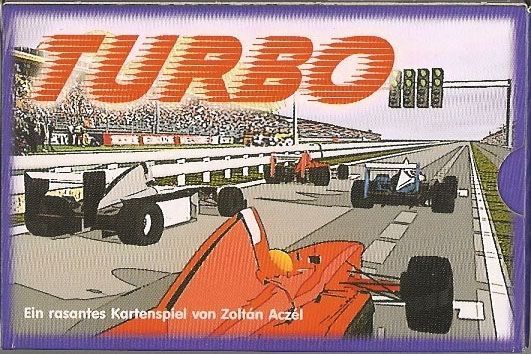Turbo (2003) Board Game
Turbo is a fast-paced card game released in 2003 by designer Thomas Hammer. The game is suitable for 2-4 players aged 10 and up and can be completed in just 10 minutes. It falls under the categories of card game, number, racing, and real-time, with gameplay mechanics including hand management, modular board, point to point movement, and simultaneous action selection.
Game Components of Turbo
How To Setup Turbo
To set up Turbo, players start by selecting their cars and determining the starting position based on the highest spin. The game board is unfolded and placed in the middle of the playing area. Each player spins the dice to see who gets the pole position. The ambulance is also placed on the board, ready to act as a dynamic obstacle.
Gameplay Mechanics and Game Objective
Player Experience
Playing Turbo is a chaotic and fun experience, especially with four players. The game requires strategic thinking about which car or the ambulance to move each turn, adding a layer of complexity to the simple racing mechanic. The setup is quick, and the game is relatively short, making it perfect for short play sessions. The artwork and design of the board enhance the racing atmosphere, making the game visually appealing and engaging.
Pros
Cons
Personal Thoughts on Turbo
Turbo is ideal for those who enjoy light-hearted, fast-paced racing games. It’s perfect for families or casual gamers looking for a fun, quick game session. However, experienced gamers might find it too simplistic. The game’s affordability and ease of setup make it a great addition to any board game collection, especially for those who enjoy retro-themed games.
We are supported by our audience. When you purchase through links on our site, we may earn an affiliate commission, at no extra cost for you. Learn more.

